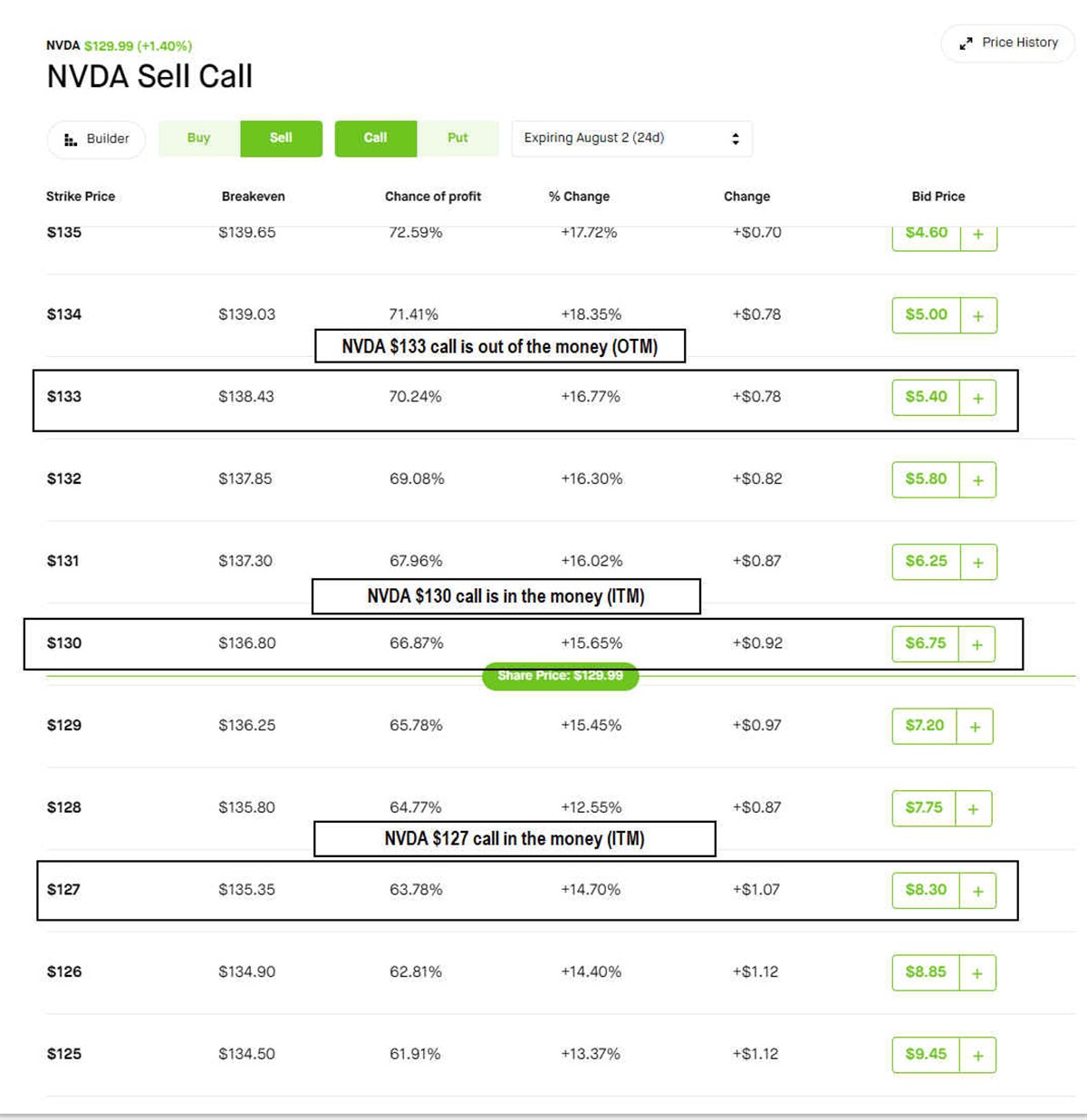 When it comes to income strategies on stocks you already own, stock options can be your best bet aside from owning dividend stocks. One of the most widely used options income strategies is the covered call. This involves selling or writing call options against your long stock. The goal is to collect the premium as income or even rent while holding the underlying stock. The upside is limited to the strike price of the sold/written call. The downside is the losses incurred if the stock falls below the breakeven price when factoring in the premium.
When it comes to income strategies on stocks you already own, stock options can be your best bet aside from owning dividend stocks. One of the most widely used options income strategies is the covered call. This involves selling or writing call options against your long stock. The goal is to collect the premium as income or even rent while holding the underlying stock. The upside is limited to the strike price of the sold/written call. The downside is the losses incurred if the stock falls below the breakeven price when factoring in the premium.
How a Covered Call Trade Works
A simple example is if you own 100 shares of ABC stock at $50 and decide to sell/write a 1 covered call at $55 for a $2 premium. That $2 is a credit that you keep regardless of where the stock moves to by expiration. However, if the stock falls below $48, then you start to lose money on the trade. Since you were already planning on holding the stock longer-term, you're not too worried about a pullback. If the stock rises above $52 on expiration, then your stock would be exercised, and you would have to sell it at $55 for a $5 profit plus the $2 premium for a $7 gain on a $50 investment, or a 14% profit.
Define Your Objective with the Underlying Stock
What you want to do with your stock objective: keep it, unload it, or are you open to having it called away? Called away means selling your stock at the selected strike price. Based on your objective with the underlying stock, you can adjust factors with the covered call.
Strike prices fall into three classifications -- out-of-the-money (OTM), at-the-money (ATM), and in-the-money (ITM) -- which will impact the value of the premium collected from selling/writing the call.
OTM Call
- The strike price is above the current stock price.
- OTM calls pay the least premium
- The higher the strike price is above the current price of the stock, the less premium you will receive when writing/selling (because there is more upside potential if the stock closes at or above the strike price).
- If you don't get called out, you can write/sell calls again, selecting between the three types of strikes.
ATM Call
- The strike price is very close or identical to the stock price.
- ATM call has the highest premium when writing/selling it.
- The purpose of this type of trade is to collect the most premium.
- If the stock price rises above the strike price, you may get called out and have to sell the stock.
- If the stock closes under the strike price on expiration, then you can write/sell an ATM call again to keep collecting the premium until you get called out.
ITM call
- The strike price is below the current stock price.
- ITM call pays a higher premium than OTM options but less than ATM options.
- This type of option provides no upside stock appreciation and is expected to be called out since it's already profitable and has intrinsic value.
- The goal for ITM should be to collect extra premiums and be prepared to exit the stock.
- If you don't get called out, you can roll the option and collect more premium.
Examples of Covered Call Premiums on NIVIDA
Let's look at how the different options classifications result in different options premiums and potential stock gains using computer and technology sector AI chip leader NVIDIA (NASDAQ: NVDA) as an example.

An OTM option like the NVDA $133 call would give you $5.40 in premium and a potential $3 in stock appreciation. Your maximum gain on this would be $8.40 for a 6.46% gain.
An ATM option is the NVDA $130 strike price. This would give you a $6.75 premium but zero stock appreciation potential. Your gain on this would be $675 for a 5.2% gain.
An ITM option like the NVDA $127 call would give you $8.30 in premium. While this seems like a larger premium, you are selling the stock for $3 less than you bought it for since the strike price is $127. This results in a net premium of $5.30 for a 4% gain.
As you can see, your net premium and net percentage gain shrink as your strike prices get lower and more ITM. The higher the strike prices get, the greater your potential percentage gain -- but the probability of hitting the maximum gain shrinks proportionately.
Take Advantage of Theta and Implied Volatility
There are many other factors with a covered call strategy. Theta (time decay) is your friend, so the longer you hold the position, the more premium you get to keep, barring the net movement of the underlying stock. Remember that time decay speeds up in the final week of expiration. As your call gets more OTM, Theta makes up more of the option value since it's all extrinsic value. On the flip side, the more ITM your call option is, the less that Theta makes up the value since most of it is intrinsic value.
Volatility will also impact the value. Ideally, you want high implied volatility (IV) when writing covered calls, as they contribute to a higher premium. For example, if you held NVDA through an earnings report and it gaps up the next day, you can write/sell an ATM or ITM-covered call for a maximum premium as IV shrinks following earnings releases.













